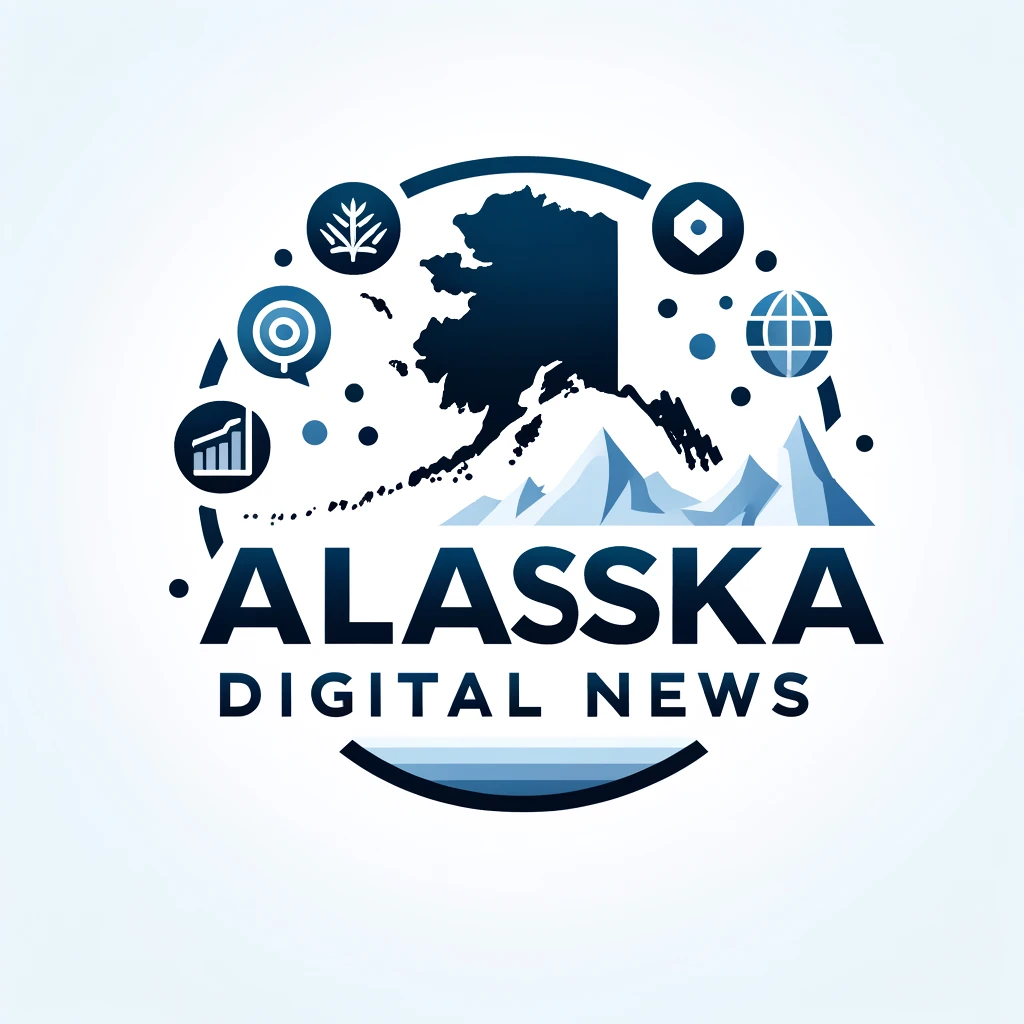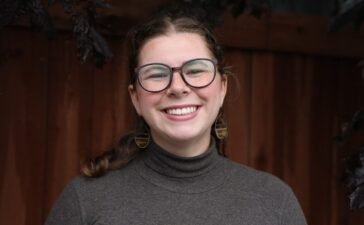Dr. Kelly Monteleone is an underwater anthropologist at Sealaska Heritage Institute and an assistant professor at the University of Calgary.
She’s kicking off SHI’s fall lecture series Wednesday with a talk titled “Our Submerged Past: Exploring Inundated Late Pleistocene (10,500-17,000 years ago) Caves in Southeast Alaska.” She’ll be joined by Kristof Richmond, Ph.D., Chief Technology Officer at Sunfish, Inc., a robotics company specializing in undersea exploration and inspection.
Dr. Monteleone sat down with KTOO’s Anna Canny to talk about her adventures underwater.
This interview has been edited for length and clarity.
Anna Canny: So, tell me a little bit about what an underwater anthropologist is — it’s not a field I’ve heard much about before.
Kelly Monteleone: You’re not going to find another one of us around the world. I am unique, but I’m looking for the same kind of sites that archeologists are on the land, places people have lived, places people were hunting, that we can find evidence of butchering or things like that.
Anna Canny: So to find human artifacts underwater, that means, presumably, that there was a time in the past when they weren’t underwater. Could you tell me a little bit about what Southeast Alaska looked like in that past, when sea levels were lower?
Kelly Monteleone: I really wish I could tell you more about what was happening in different areas, in areas that are now underwater or not underwater. The sea level history throughout Southeast Alaska is so complex. Most of my research has focused on the west side of Prince of Wales Island, and there we see sea level as low as 165 meters. I’m sorry, you’re gonna have to convert that yourself. But then if you just move a little bit to the east, over to Ketchikan, sea levels around the same time, we’re 200 meters above. So we’re talking about a very fluid landscape. We don’t think of the Earth’s crust as morphing and moving that much, but with the glaciers receding and the weight of the glaciers moving in different ways. You can almost think of the landscape at that time as being like the surface of a balloon, where you press in one spot and it goes up in one and depresses in another, and it causes these interesting formations. When you look at these sea level histories, the sea level was changing so freaking fast. I calculated from around that time that it’s around five centimeters a year of sea level change. Right now, globally, it’s moving at three millimeters. So that’s a magnitude difference.
Anna Canny: Wow. So I wanted to ask about one of your big discoveries, which was a fish weir that you found submerged off of Prince of Wales Island back in 2022. What does a discovery like that reveal?
Kelly Monteleone: It pushes back the knowledge in that region, and it’s about 1,000 years earlier than Shuká Káa, but it’s in the same area. I kind of wonder if, like, Shuká Káa was the human remains were found on the northwest corner of Prince of Wales Island. The other name that was known was “on your knees cave.” And so that individual would have lived in a community, and I kind of wonder, if it was in Shakan Bay, it would be a logical place that that would be within their hunting ground, and they believe Shuká Káa was just, you know, hunting for a bear and didn’t win.
Anna Canny: And you’re still exploring some of those same submerged area and looking for more things. What’s a dream artifact for you?
Kelly Moteleone: I would like to find a canoe with animal remains — because human remains trigger other things — that have evidence of butcher marks. So I can source the wood on the canoe, and I can date both the wood and the animal remains. Doesn’t that sound like the perfect find? That’s my dream find. And my goal would be that it’s actually an early enough canoe that the wood is not from Southeast Alaska. A canoe, a, you know, a vessel of some kind that was actually made further back along that kelp highway. You know? The coastal migration theory. And the kelp highway runs basically from Japan all the way down to California, where you can find these kelp forests and find similar resources to hunt, gather fish, etc.
Anna Canny: Right, so figuring when people arrived here and revealing more about just how far back time immemorial stretches. What is most exciting for you about doing that kind of work?
Kelly Monteleone: I love working with the Lingít people of Southeast Alaska and the Haida and Tsimshian too, but the Lingít are the ones we know. We’ve been here since time immemorial, and the Lingít people really are interested in learning about their ancestors. They proved that very well with Shuká Káa, and that’s what I love about doing this work here, is I actually can work with people who see an affiliation to the work I’m doing to understand their past. I always try to link what I’m doing also to climate change, because when I’m talking about five centimeters of sea level rise, we can’t comprehend that, that’s something that could happen, as we’re talking about glaciers hitting tipping points and things like that. And so understanding how people survived on that landscape as the sea level was rising, how did people adapt? That could help us moving forward as sea levels keep rising. I hope we never hit five centimeters of sea level rise a year again. But knowing that people survived that in that region, I think, is a glimmer of hope also. But part of it is that I love history and I love science, and this lets me do both.
Watch Dr. Monteleone’s lecture at noon Wednesday in-person at the Walter Soboleff Building or via livestream on SHI’s YouTube Channel.
Correction: This post has been updated to reflect that the lecture is Wednesday, not Tuesday.






amoxicillin online buy – amoxil usa order amoxicillin generic
amoxil oral – buy amoxicillin generic amoxicillin pill
fluconazole for sale online – this buy forcan medication
oral cenforce 50mg – cenforce rs cenforce 50mg brand
cialis online without perscription – cialis for sale in canada tadalafil tablets 20 mg reviews
cialis high blood pressure – https://strongtadafl.com/ cialis tadalafil 20mg tablets
buy viagra birmingham – viagra buy in bangkok sildenafil citrate 100
Greetings! Very gainful par‘nesis within this article! It’s the crumb changes which wish make the largest changes. Thanks a a quantity for sharing! synthroid post ciclo como tomar